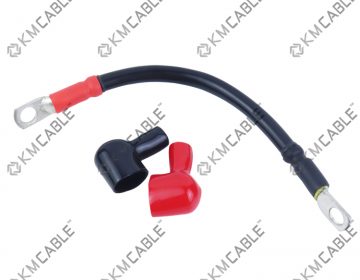
Have you wondered about the process of cable manufacturing? We’re going to talk about the common and crucial steps of cable manufacturing in this post.
Before we talk about Cables Manufacturing
First of all, let’s clarify two nouns: wire and cable.
Generally, we call a single conductor a wire, while a cable is two or more insulated wires wrapped in one jacket. Especially, there are always multiple conductors stranded together (we’ll explain why in the following content) within a single insulating layer, and we classify it as a single conductor, i.e. a wire.
Now let’s learn the manufacturing procedures together.
Cables Manufacturing Step 1: Wire drawing
In the first step, our aim is to acquire metal (usually copper or aluminum) wires that fit with AWG (American Wire Gauge). The method is to pull the copper or aluminum rod through a series of synthetic diamond dies, which gradually decrease in size, on the draw bench. And this is processing with a lubricating and cooling system that increased the life of the dies and prevents the wire from overheating.
Step 2: Annealing
During the drawing process, we apply tremendous pressure on metal rod to form a thinner wire. Thus, the wire we get is extremely brittle and can easily be fractured if flexed. The finished wire must be flexible, so in this step we’re going to soften, or to anneal the wire.
Annealing is accomplished by heating the wire to its recrystallization temperature for a period of time. The key here is to avoid oxidation of the wire.
Step 3: Twisting and stranding
As mentioned above, multiple wires often get stranded. That’s because given the same cross-sectional area, stranded wire has better flexibility and electrical performance than single wire.
In this step, two or more wires of the same gauge are twisted or stranded together using a proprietary formula to determine twist length.
Step 4: Extrusion
The wire, now soft and flexible, is passed through an extruder, where the coating of plastic or other insulating material is applied.
Materials are poured into the rear part of the extruder, and are pushed forward while heated into melt. Exiting the extruder, the coated wire passes through another cooling system and is coiled on reels.
Step 5: Cabling
The basic component of cable is now prepared. Next we need to assemble the cable according to different utilities. This process is done in a cabling station.
For the electrical and electronic cables in daily use, we just need to wrap up one or more strands of wires, together with interference-preventing layer if needed, into the protection jacket. In order to have a better forming degree, we often use filler to ensure the finished cable in a shape of round.

For power cable and other cables that need to be buried underground, there are more protective measures:
- bedding/inner sheath: usually a plastic layer to keep the inner wires together and prepare the ‘bed’ for steel armor.
- steel armor: a steel layer used to sustain the pressure and prevent pests underground.
- outer sheath: usually a layer made from the same material as inner sheath, applied over the armor for overall mechanical, weather, chemical and electrical protection.
See below video which is showing the manufacturing in KMcable.
This concludes what we have for today. If you want to know more about cable manufacturing, feel free to contact us or leave a comment. We’d be glad to hear from you.
Note: We do not own the images used in this post. Feel free to contact us if they belong to you, and we’ll take them down as quickly as we possibly can.
Source:https://insightsolutionsglobal.com/
KMCable is a leading provider of cable products. We supply a wide range of flexible, high voltage, low voltage (flats & multicore) single core and special application cable. All cable supplied through KMCable has been quality tested and certified to install throughout the North America, Europe, Asia, Oceania and many other places in the world.








